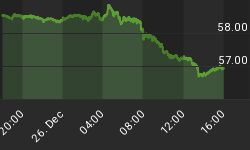The US World Cup Soccer Team may be on its way home from Germany, leaving the theatre of world soccer to the English, the Brazilians, the Germans, the French, the Italians, the Aussie, the Brazilians and Argentinians. But currency markets still have a good reason for betting on the US currency against the euro, the pound, the Aussie as well as the emerging market currencies of Latin America.
Just as the US dollar was under assault last month due to a downturn in sentiment, compounded by central bank diversification, looming end to Fed tightening and increased signs of diminishing economic growth, the US currency made a 180 degree turn on the back of largely USD-bound safe haven flows from the deteriorating emerging market sell-off, coupled with speculation of more sustained Fed tightening. Speculation of a 50-bp Fed hike this week is being especially triggered by better than expected US data 2 weeks ago (Empire survey, Philly Fed survey, and Q1 current account). The reports relieved the "growth" part of the growth-inflation trade off and emboldened justifications (and expectations) for a more aggressive rate hike in June, as well as additional tightening in August, rather than a smaller but more prolonged tightening in August.
The reason we do not expect a 50-bp rate hike on Thursday is the Fed's awareness of prolonging the emerging market and G7 equity sell-offs. Surely, the Fed would want the central bank of the world's second largest economy (and biggest provider of world capital) to normalize interest rates as soon as possible, without the negative market repercussions. Subsequently, an anticipated 25-bp Fed hike will have a less damaging market reaction in world bourses, thus, more likely to tip the Bank of Japan's into raising rates in its July 13-14 meeting. A 50-bp Fed hike on June 29 would accelerate the sell-off in G7 and emerging markets and render the already market-sensitive BoJ even more averse from lifting rates off their zero % level.
We do not ignore the argument that a 50-bp Fed hike could be positive for equities and bond markets as it would reduce the need for further tightening. The justification for such aggressive policy action is in place. As long as inflationary expectations are in play and the economic indicators are suggesting a slowdown in activity, rather than a contraction, a one-time aggressive dose of policy tightening could help stem inflationary expectations. Either way, we expect the Fed to ease rates as early as January, if not December, with a 60% chance of a GDP contraction in Q1 2007.
The emerging market sell-off coupled with ongoing speculation of BoJ's Fukui resignation did lift the dollar across the board, but the sell-off in the pound merit its own focus. Last week's unexpected death of the most hawkish member of the Bank of England's Monetary Policy Committee member David Walton triggered a sharp sell-off in the British pound, dropping 2 cents against the dollar to a 1½ month low.
The yen's deepening damage was sustained as the Bank of Japan reiterated it will raise rates "slowly" and "cautiously", dampening possibilities for any abrupt rate hike. Expecting the Fed to keep the door open for further tightening, the door remains open for USDJPY to breach the 116.64 resistance -- the 61.8% retracement of the 121.36-108.97 move. A breach above it is apt to call up the next target at 117.10 -- the trendline resistance extending from the 121.36 high to the 118.88 high. Indeed, this target can well be reached after the Fed keeps the door for further tightening in next week's policy statement. Yet as we have seen in the past, selloffs in the USDJPY have proven to be rapid and any change of tone from the Bank of Japan in favor of a July rate hike coupled with a stronger than expected tankan survey July 2nd -- could trigger the 114.70-115 figure. So far, support stands firm at the 100 day MA of 115.50, with foundation backed at 115.15.
With the emerging market sell-off serving as a vital element to the dollar rally, the short-term dollar outlook appears bright. Regardless of whether the Fed will raise by 25 or 50 next week (we expect 50 bps), the FOMC statement will likely maintain the door open for further tightening ahead, which would not only improve the dollar's yield foundation but also enhance its safe haven luster from fresh emerging market selling. Expectations of as much as 50 bps tightening in the fed funds rate over the next 3 months, the story of emerging market bourses and bond may come to an end, especially in the imbalance-laden economies of widening budget and trade deficits.
Due to the aforementioned factors, we adjust our medium-term dollar forecast to the following: EURUSD: 1.24 by month end; 1.23 by end of July and 1.27 by end of Sep. USDJPY: 117.00 by month-end, 115 by end of July and 111 by end of Sep. GBPUSD: 1.80 by month-end, 1.79 by end of July and 1.83 by end of Sep.
















